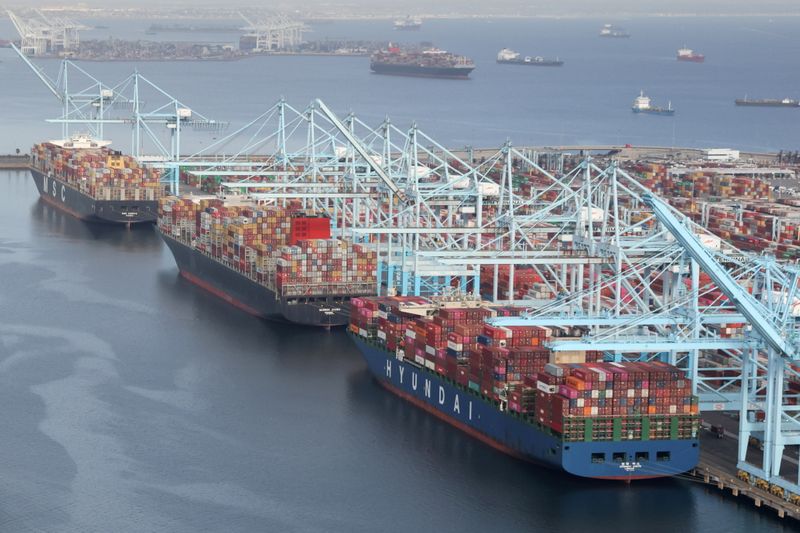WASHINGTON (Reuters) – The U.S. trade deficit in goods jumped to a record high in March, suggesting trade was a drag on economic growth in the first quarter, but that was likely offset by robust domestic demand amid massive government aid.
Economic activity in the United States has rebounded more quickly compared to its global rivals. The pent-up demand is drawing in imports, eclipsing a recovery in exports and keeping the overall trade deficit elevated. The report from the Commerce Department on Wednesday also showed inventories at retailers were drawn down in March, underscoring the strong domestic demand.
“The widening in the goods deficit suggests that trade will be a drag on first-quarter GDP,” said Ryan Sweet, a senior economist at Moody’s Analytics in West Chester, Pennsylvania. “This won’t be a big issue, as other parts of the economy are still doing well, such as business investment in equipment and consumer spending.”
The goods trade deficit surged 4.0% to $90.6 billion last month, the highest in the history of the series. Exports of goods accelerated 8.7% to $142.0 billion. They were boosted by shipments of motor vehicles, industrial supplies, consumer and capital goods, and food.
The jump in exports was offset by a 6.8% advance in imports to $232.6 billion. Imports rose broadly. There were large gains in imports of motor vehicles, industrial supplies, consumer goods and food. Capital goods imports also rose solidly.
Demand during the pandemic shifted to goods from services, with Americans cooped up at home. Consumption has been boosted by the very generous fiscal stimulus, including the White House’s $1.9 trillion COVID-19 pandemic rescue package, which dispatched one-time $1,400 checks to qualified households and extended a $300 unemployment subsidy through early September.
Economists expect the goods trade deficit will remain large at least until year-end, with demand reverting back to services like air travel and dining out following the expansion of the COVID-19 vaccination program to all adult Americans.
“The goods deficit will start to shrink by the end of 2021 and into 2022,” said Bill Adams, senior economist at PNC Financial in Pittsburgh, Pennsylvania. “As the pandemic comes under control in the United States, American consumers will spend less on imported goods, shrinking imports, and foreigners will buy more U.S. exports as their economies recover further.”
Stocks on Wall Street were mixed. The dollar rose against a basket of currencies. U.S. Treasury prices were mixed.
STRONG GDP GROWTH ANTICIPATED
The report was published ahead of Thursday’s advance first-quarter gross domestic product data, which is expected to show the economy grew at a robust 6.1% annualized rate in the first three months of the year after expanding at a 4.3% pace in the fourth quarter, according to a Reuters survey of economists.
That would be the second-fastest growth pace since the third quarter of 2003. Strong consumer spending and business investment as well as the housing market are expected to boost growth.
Some of the goods imported in March ended up in warehouses at wholesalers, which could blunt the drag on GDP growth from trade. The Commerce Department reported wholesale inventories shot up 1.4% last month after rising 0.9% in February.
But stocks at retailers tumbled 1.4% after gaining 0.1% in February. Retail inventories excluding autos, which go into the calculation of GDP, rose 0.6% after advancing 1.4% in February.
Economists at Goldman Sachs lifted their first-quarter GDP growth estimate by three tenths of a percentage point to a 7.7% rate, noting that the drawdown in retail inventories was not as large as they had previously assumed.
Though trade flows continue to recover after being severely disrupted early in the pandemic, bottlenecks in the global supply chain remain a challenge.
“Supply chain bottlenecks will probably remain a constraining factor in the near term that could weigh on trade,” said Rubeela Farooqi, chief U.S. economist at High Frequency Economics in White Plains, New York. “However, flows will likely bounce once restrictions on all activity are lifted globally.”
(Reporting by Lucia Mutikani; Editing by Paul Simao and Chizu Nomiyama)























